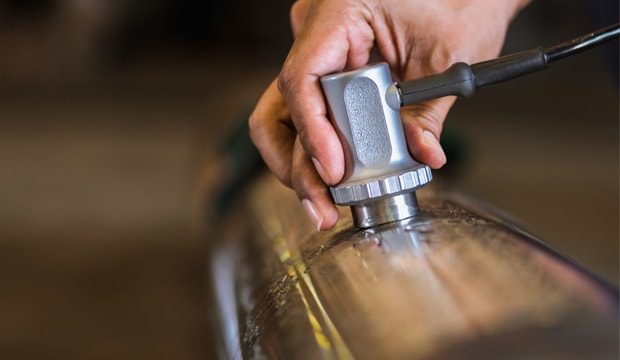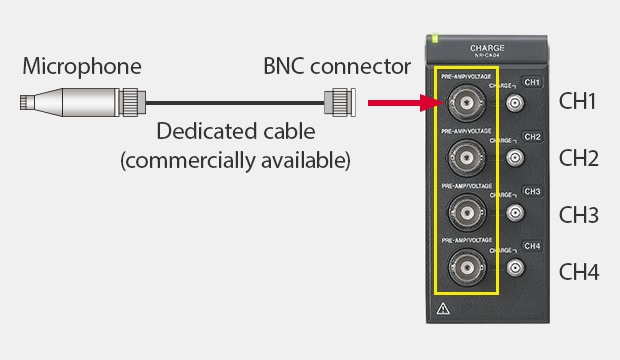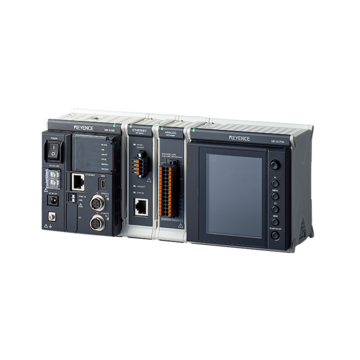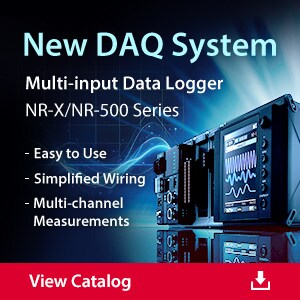Data Acquisition (DAQ)
Sound and Noise Measurement with Microphone Transducers
-
Tags:
- Sound Intensity , Sound Level
Sound and noise shape our daily environment. From soothing birdsong to the disruption of construction noise, we experience a wide range of auditory inputs.
Sound is a physical vibration that travels through a medium like air or water and is interpreted by the human ear. Noise, however, refers to unwanted sounds that disrupt daily activities. This article explains how transducers in microphones are important in sound and noise analysis.
Understanding Sound and Noise Measurement
Sound is created through vibrations in a medium such as air, water, or solid objects. These vibrations travel through the medium as waves at a certain speed, known as the speed of sound.
The source of these vibrations can vary; it could be from a vibrating diaphragm in a speaker or the vibrations of vocal cords when we speak. As the source continues to vibrate, the vibrations travel away from the source and form a sound wave. Sound pressure level (SPL) is a logarithmic measure of the effective sound pressure of a sound relative to a reference value. This means that SPL measures how loud or intense a sound is compared to a standard reference level.
The standard reference sound pressure in air or other gases is 20 µPa (micro pascals), which is usually considered the threshold of human hearing at 1 kHz. This reference level is used to calculate the SPL of a sound, which is measured in decibels (dB).
We’re here to provide you with more details.
Reach out today!

What are Microphone Transducers?
Microphone transducers are essential components in every microphone, transforming sound waves into electrical signals with precision. These electrical signals are then amplified and processed to produce the final audio output. Without a proper transducer, a microphone is essentially useless.
Microphones use different types of transducers, each with its own unique features. One of the most popular is the dynamic transducer. Imagine a small diaphragm connected to a coil, moving within a magnetic field to capture sound with precision. As sound waves hit the diaphragm, they vibrate and cause the coil to move, generating an electrical signal.
Types of Microphone Transducers
Discover the three main microphone transducer types: ribbon, condenser, and dynamic.
Ribbon
Ribbon microphones are prized for their exceptional sound quality and are among the most premium microphone transducers. They use a thin metal ribbon suspended between magnet poles. Known for their warm, natural audio, ribbon microphones are a top choice in professional studios as they are too delicate for live music, especially for capturing the depth of acoustic instruments like strings and brass.
Condenser
Condenser microphones use a lightweight diaphragm, typically metal or plastic, that vibrates in response to sound waves. Positioned near a charged backplate, the diaphragm forms an electric field. As it moves, changes in capacitance creates an electrical signal. Known for their sensitivity and broad frequency response, condenser microphones excel at capturing vocals, acoustic instruments, and room ambiance with precision and clarity.
Dynamic
Dynamic microphones are a go-to choice for live performances, thanks to their reliability and versatility. Inside, they feature a clever design: a wire coil attached to a diaphragm floating in a magnetic field that turns sound waves into powerful audio. These are the most affordable and rugged options out of the three.
Discover more about this product.
Click here to book your demo.

Key Applications of Microphone Transducers in Sound Measurement
Microphone transducers are vital in many industries due to their many applications:

Vibration Testing
An important application is machine vibration testing, where microphones detect and measure vibrations from equipment like motors, generators, and turbines.
Condition Monitoring
This is another key use case, using microphones to track sound patterns from machines. This helps detect anomalies early, enabling proactive maintenance and reducing the risk of unexpected breakdowns.
Noise Source Analysis
Microphones play a key role in noise source analysis for transportation. Airports, metro systems, and bus stations use them to measure noise from aircraft, trains, and buses.
Wind Tunnel Testing
Microphones turn aerospace and automotive prototypes into reality. By capturing sound across different speeds and conditions, they provide engineers with crucial insights to refine designs, enhance performance, and reduce noise.
How Microphone Transducers Measure Sound and Noise
Microphone transducers consist of two main components: the diaphragm and the backplate. The diaphragm, an ultra-thin membrane, vibrates in response to sound waves, converting them into mechanical vibrations. These vibrations are then transmitted through the microphone's circuitry for amplification and recording.
The backplate, a metallic component behind the diaphragm, is key to this process. Electrically charged, it works with the diaphragm to form a capacitor-like structure, creating an electric field. The distance between them directly affects the field's strength.
When sound waves hit the diaphragm, it moves back and forth, changing the distance between components. These movements modulate the electric field, generating an electrical signal that matches the air pressure variations of the sound waves. This electrical signal is processed through the microphone's circuitry for amplification or recording.
Curious about our pricing?
Click here to find out more.

Challenges and Considerations in Sound Measurement
Conducting sound measurements presents various challenges that can affect the accuracy of results. To achieve reliable outcomes, it is essential to thoroughly assess and address these issues.
Environmental Variability
One of the biggest challenges in sound measurement is environmental variability. The acoustic properties of an environment can greatly influence the sound waves and impact the accuracy of the measurements. For example, in an outdoor setting, wind speed and direction can affect the propagation of sound waves, while in an indoor setting, room size and shape can cause reflections and echo.
To overcome this challenge, it is essential to carefully select measurement locations that are representative of the acoustic environment being studied. Additionally, multiple measurements should be taken at different times to account for any changes in environmental conditions.
Microphone Placement
The placement of microphones during sound measurement is crucial as it directly affects the data collected. The position of a microphone can greatly alter the perceived loudness and frequency response of a sound source. Therefore, it is important to follow standardized guidelines for microphone placement, such as the International Electrotechnical Commission's (IEC) recommendation for a 90-degree angle between the sound source and microphone.
Instrument Calibration
Instrument calibration is another crucial aspect of sound measurement that must be carefully considered. Calibrating instruments ensure that they are accurately measuring sound levels and frequencies. Without proper calibration, the results obtained may not be reliable.
Specialized equipment is required to calibrate instruments, such as acoustic calibrators or pistonphones. It is also important to regularly calibrate instruments to maintain accuracy over time.
Human Subjectivity
Another challenge in sound measurement is human subjectivity. People perceive sounds differently based on their individual hearing capabilities and personal preferences. This subjectivity can greatly impact the interpretation of sound data.
How KEYENCE Data Loggers Enhance Sound and Noise Measurement
Data loggers are vital for accurate sound and noise measurement across various applications. The NR-X Series elevates this with advanced features, surpassing conventional models.

KEYENCE data loggers' reduced-wiring system takes the stress out of measurement prep, eliminating one of the most time-consuming steps of traditional models. Many commercially off the shelf microphones can be wired directly to the KEYENCE data logger. With fewer wires to deal with, you’ll save time, boost efficiency, and get your measurements faster.
These data loggers are equipped with multiple power supply options including AC, DC, or battery units. The high-capacity lithium-ion battery included in some models allows for up to 800 hours of continuous measurement, making it perfect for long-term monitoring applications.
Ready to take your sound and noise measurement to the next level? Upgrade to the NR-X Series multi-input data loggers and experience enhanced functionality, reduced wiring, and extended battery life. Contact us today to learn how our data loggers can improve your measurement process.
Get detailed information on our products by downloading our catalog.
View Catalog



